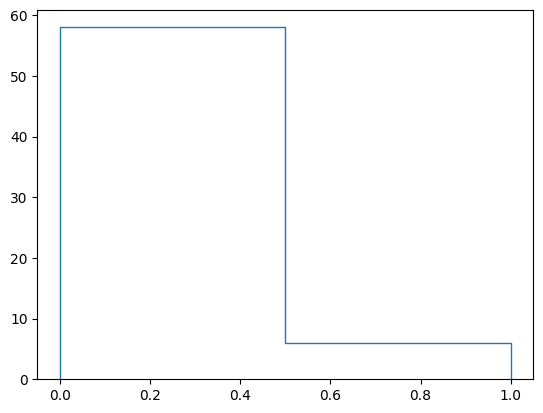Hampy Tutorial#
This tutorial goes through most of hampy features with examples of how to use it.
from pprint import pprint
try:
from qlauncher.hampy import Variable, Equation
from qlauncher import hampy
except:
import sys
import os
parent_dir = os.path.abspath(os.path.join(os.getcwd(), os.pardir))
sys.path.insert(0, parent_dir)
from qlauncher.hampy import Variable, Equation
from qlauncher import hampy
Main components:
Equation: Wrapper to SparsePauliOp that adds few functionalities for boolean operations
Operations:
And
Or
Xor
Negation
Other functions:
hamiltonian - stores the SparsePauliOp instance
get_variable(index) - returns the variable under given index
is_quadratic() - verifies if hamiltonian is of up to quadratic order
get_order() - returns the order of hamiltonian
Variable: Pointer for specific variable
Note: Variable(0, eq) == eq.get_variable(0) == eq[0]
eq = Equation(4)
var0 = eq.get_variable(0)
var2 = Variable(2, eq)
part_0 = var0 & ~var2
part_1 = eq[1] & eq[3]
eq = part_0 | part_1
print(f'Hamiltonian order: {eq.get_order()}')
print(f'And so Hamiltonian is not quadratic: {eq.is_quadratic()}')
pprint(list(eq.hamiltonian.paulis))
Hamiltonian order: 4
And so Hamiltonian is not quadratic: False
[Pauli('IIII'),
Pauli('IZII'),
Pauli('IIIZ'),
Pauli('IZIZ'),
Pauli('IIZI'),
Pauli('ZIII'),
Pauli('ZIZI'),
Pauli('IZZI'),
Pauli('ZZII'),
Pauli('ZZZI'),
Pauli('IIZZ'),
Pauli('ZIIZ'),
Pauli('ZIZZ'),
Pauli('IZZZ'),
Pauli('ZZIZ'),
Pauli('ZZZZ')]
Hampy also support some of often used equations in the equations modules such as one_in_n returning True if there is exactly one variable that is true in given list.
one_in_n = hampy.equations.one_in_n([0, 1, 2, 3, 4, 5], size=6)
print(one_in_n.hamiltonian)
SparsePauliOp(['IIIIII', 'IIIZII', 'IIIIZI', 'IIIZZI', 'IIIIIZ', 'IIIZIZ', 'IIIIZZ', 'ZIIIII', 'ZIIZII', 'ZIIIZI', 'IZZZIZ', 'IZZIZZ', 'IZZZZZ', 'ZZZZII', 'ZZZIZI', 'ZZZZZI', 'ZZZIIZ', 'ZZZZIZ', 'ZZZIZZ', 'ZZZZZZ', 'IZIIII', 'IZIZII', 'IZIIZI', 'IIZIII', 'IIZZII', 'IIZIZI', 'ZZIZIZ', 'ZZIIZZ', 'ZZIZZZ', 'ZIZZIZ', 'ZIZIZZ', 'ZIZZZZ', 'ZIIIIZ', 'IZIIIZ', 'ZZIIII', 'IIZIIZ', 'ZIZIII', 'IZZIII', 'ZIIZZZ', 'IZIZZZ', 'ZZIZZI', 'IIZZZZ', 'ZIZZZI', 'IZZZZI'],
coeffs=[ 0.09375+0.j, 0.0625 +0.j, 0.0625 +0.j, 0.03125+0.j, 0.0625 +0.j,
0.03125+0.j, 0.03125+0.j, 0.0625 +0.j, 0.03125+0.j, 0.03125+0.j,
-0.03125+0.j, -0.03125+0.j, -0.0625 +0.j, -0.03125+0.j, -0.03125+0.j,
-0.0625 +0.j, -0.03125+0.j, -0.0625 +0.j, -0.0625 +0.j, -0.09375+0.j,
0.0625 +0.j, 0.03125+0.j, 0.03125+0.j, 0.0625 +0.j, 0.03125+0.j,
0.03125+0.j, -0.03125+0.j, -0.03125+0.j, -0.0625 +0.j, -0.03125+0.j,
-0.03125+0.j, -0.0625 +0.j, 0.03125+0.j, 0.03125+0.j, 0.03125+0.j,
0.03125+0.j, 0.03125+0.j, 0.03125+0.j, -0.03125+0.j, -0.03125+0.j,
-0.03125+0.j, -0.03125+0.j, -0.03125+0.j, -0.03125+0.j])
Hampy also offers tools for debugging and verifying correctness of your hamiltonians.
Main component of debug module is TruthTable storing all information about values of hamiltonians truth table, because of that is strongly limited to around hamiltonians of size around 20, and we do not recommend trying to use it on larger hamiltonians, as complexity growths exponentially.
truth = hampy.debug.TruthTable(one_in_n)
print(f'Hamiltonians energies are in binary values?: {truth.check_if_binary()}')
print(f"Value of '000100' is {truth['000100']}")
print(f'Value of 0 is {truth[0]}')
print(f'Hamiltonian has {truth.count(True)} valid solutions:')
pprint(truth.get_solutions(True))
truth.plot_distribution()
Hamiltonians energies are in binary values?: True
Value of '000100' is 1
Value of 0 is 0
Hamiltonian has 6 valid solutions:
['100000', '010000', '001000', '000100', '000010', '000001']

Utility functions#
shift_affected_qubits()
Changes the qubits affected by a given equation.
constraint = hampy.one_in_n([0, 2], 4)
constraint &= (~constraint[1] & ~constraint[3]) # Restrict other qubits to 0
truth = hampy.debug.TruthTable(constraint)
print(f'Constraint has {truth.count(True)} valid solutions:')
pprint(truth.get_solutions(True))
Constraint has 2 valid solutions:
['1000', '0010']
shifted = hampy.shift_affected_qubits(constraint, 1)
truth = hampy.debug.TruthTable(shifted)
print(f'Constraint has {truth.count(True)} valid solutions:')
pprint(truth.get_solutions(True))
Constraint has 2 valid solutions:
['0100', '0001']
The one_in_n constraint was shifted from qubits [0,2] to qubits [1,3]